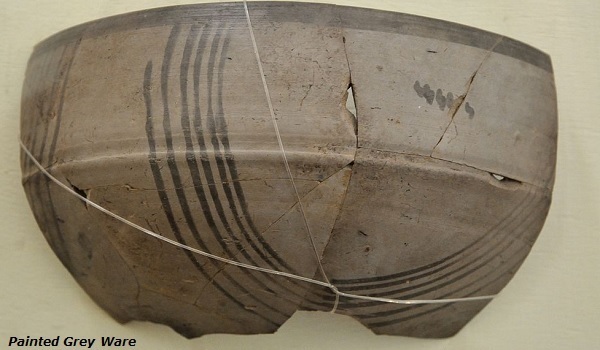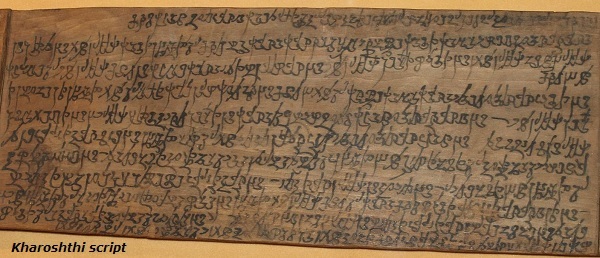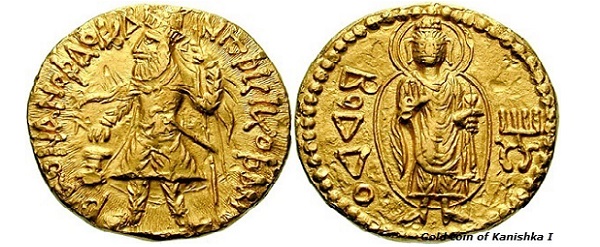
- Ancient Indian History - Home
- Study of Indian History
- Writing of Ancient Indian History
- Imperialist Historiography
- Historiography Nationalist Approach
- Marxist School of History
- Sources of Ancient Indian History
- Archaeological Sources
- Geographical Background
- Geography in Ancient Literature
- Stone Age Cultures
- Mesolithic Culture
- The Neolithic Age
- Chalcolithic Period of India
- Chalcolithic Culture In India
- Harappan Civilization
- Harappan Town Planning
- Harappan Crafts & Industries
- Harappan Culture
- Harappan Religion
- Harappan Chronology
- Vedic Civilization
- Vedic Society
- Vedic Politics
- Vedic Religion & Philosophy
- The Aryan Invasion
- Later Vedic Age
- Social System after Vedic Age
- Achievements of Indian Philosophy
- Evolution of Jainism
- Evolution of Buddhism
- Alexander’s Campaign in India
- Maurya Dynasty
- Kalinga War & its Impact
- Society & Economy during Mauryas
- Mauryan Governance
- Early History of South India
- Age of Smaller Dynasties
- Literature of Satavahana Period
- Society of Satavahana Period
- Economy of Satavahana Period
- Technology of Satavahana Period
- Chola Dynasty
- Pandya Dynasty
- Chera Dynasty
- Period of Foreign Invaders
- Gupta Period
- Decline of Guptas
- Governance of Gupta Period
- Literature of Gupta Period
- Economy in Gupta Period
- Science & Tech of Gupta Period
- India after the Gupta Period
- Period of Harsha
- South India during the Harsha Period
- Kadamba Dynasty
- History of Kamarupa
- India after Harsha
- Gurjara Pratiharas
- Palas of Bengal
- Rashtrakutas of Deccan
- Literature after the Harsha Period
- Society after the Harsha Period
- Economy after the Harsha Period
- Religion after the Harsha Period
- References & Disclaimer
Archaeological Sources
The archaeological sources played an important role in constructing or/and reconstructing the history of a region.
The archaeological source of Indian history is only about two centuries old.
The archaeological source enhanced our knowledge about our past and also provided important materials, which we could not have been obtained otherwise.
Up to 1920, Indian civilization was considered to have begun about 6th century B.C. However, the excavations at Mohenjodaro, Kalibangan, and Harappa prove its antiquity to be of 5,000 B.C.
Prehistoric artifacts found in the excavations have shown that human activities had started here as early as about two million years ago.
Epigraphy and Numismatics are the important branches of the study of history, which has greatly enhanced the knowledge of India's past.
Epigraphy is the study of inscriptions and Numismatic is the study of coins, medals, or paper money.

Coins are an important numismatic source that tells us about the Indo-Greek, Saka-Parthian, and Kushana Kings.
Inscriptions of Ashoka and Samudragupta provide valuable information about social and political status of the people of that period.
The study of these inscriptions reveals the world about Ashoka's views on dharma (religion) and conquests of Samudragupta.
Archaeological Monuments
The temples and sculptures display an architectural and artistic history of the Indians from the Gupta period up-to recent times.
During the Gupta period, the large caves i.e. Chaityas and Viharas were excavated in the hills of Western India.
The Kailasa Temple of Ellora and Rathas at Mahabalipuram have been carved out of rocks from outside.
The excavations of the cities of Mohenjodaro and Harappa prove the antiquity of Indian culture and civilization, which are more than two thousand years old.
The historic sites such as Kalibangan, Lothal, Dholavira, and Rakhigarhi are the contemporary of Mohenjodaro and Harappa civilizations.
The Harappan civilizations cover the area of Gujarat, Maharashtra, Haryana, Punjab, Rajasthan, and Uttar Pradesh (in India).
The Dark Age of Indian history was the period between 1500 and 600 B.C. This is known as Dark Age because not much is known about this period.
The archaeological discoveries of Black-and-Red Ware, Painted Grey Ware, Malwa, and Jorwe cultures have filled the chronological gaps as well as covered the geographical extent.

-
Some of the important points that Archaeological discoveries display are −
Indians had domesticated sheep and goat and started agriculture about 8,000 years ago and Iron metal came in regular use about 1,600 B.C.
The tradition of rock paintings in India is proved to be more than 12 thousand years old.
Tools and remains found in the Kashmir and Narmada valleys show that the human activities started in the subcontinent as early as two million years ago.
Inscriptions
The inscriptions are the most important and reliable sources of Indian history.
Inscriptions are the contemporary documents those are free from later interpolations as it is impossible to add something to it at a later period. Therefore, it comes in the original form as it was composed in and engraved.
The manuscripts were written on soft materials like birch bark, palm leaf, paper etc. They became fragile in a course of time and were frequently required to be copied and at the time of copying, some irrelevant additions were made and some errors tend to creep in. Therefore, they are not considered as a reliable source of information about history.
The script of the inscriptions also helps the historian in many ways.
The Harappan seals depict the earliest system of writings, however, they could not be decoded yet.
The Ashokan inscriptions are claimed to be the earliest one of the systems of writing. Ashokas inscriptions are found written in four scripts.
Kharoshthi script was used in Pakistan region, which is written from right to left and is evolved on the Varnamala (alphabet) system of the Indian languages.

Brahmi script was used for the rest of the empire from Kalsi in the north in Uttaranchal up to Mysore in the south.
Palaeography is the study of development of the scripts.
The epigraphic studies started in the late 18th century.
Brahmi script was adopted by the rulers after Ashoka and continued for succeeding centuries.
The Brahmi script kept modifying century after century, which led to the development of most of the scripts of India, including Tamil, Telugu, Kannada, and Malayalam in the south and Nagari, Gujarati, Bangla, etc. in the north.
The modifications in the letters of the script have made it possible to ascertain the time period in which the inscription was written.
In 1837, James Prinsep completed the chart of Ashokan alphabets.
The inscriptions of Ashoka had been recorded in different years of his reign and are known as edicts because they are in the form of the king's order or desire
The edicts of Ashoka prove that he (Ashoka) was a benevolent king concerned with the welfare of not only his subjects, but also of the whole humanity.
Inscriptions of the Indo-Greeks, Saka-kshatrapas and Kushanas adopt Indian names after two or three generations. These inscriptions illustrate that they were also engaged in social and religious welfare activities like any other Indian kings.
Junagarh Rock inscription of Rudradaman was written in the mid of 2nd century A.D. It was an early example of an inscription written in Sanskrit; however, Sanskrit became prominent since the Gupta period.
Pillar inscription of Allahabad describes the achievements of Samudragupta.
The epigraphs of the Gupta period started trends of giving the genealogy of kings with the account of their conquests and achievements. This became a trend of the subsequent dynasties to give a list of their predecessors and mention mythology of their origins.
The Aihole inscription of the Chalukya king Pulkeshin-II describes a dynastic genealogy and achievements.
The Gwalior inscription of Bhoja also gives a full account of his predecessors and their achievements.
Numismatics
Numismatics is considered as the second most important source for reconstructing the history of India after inscriptions.
Coins are mostly found in the hoards while digging field or constructing a building, making a road, etc.
Coins found in systematic excavations are less in number, but are very valuable because their chronology and cultural context can be fixed precisely.
Earliest coins are known as the punch-marked coins. They are made of either silver or copper. In addition to this, some gold punch-marked coins were also found, but they are very rare and their authenticity is doubtful.
The Indo-Greek coins were also made up of silver and copper and rarely in gold.
The Kushanas issued their coins mostly in gold and copper, rarely in silver.

The Guptas issued their coins mostly in gold and silver but the gold coins are numerous.
The punch-marked coins that bear (only) symbols on them are the earliest coins of India. Each symbol is punched separately, which sometimes overlap the other.
Punch-marked coins have been found throughout the country, starting from Taxila to Magadha to Mysore or even further south. They do not bear any inscription or legend on them.
The Indo-Greek coins depict beautiful artistic features on them. The portrait or bust of the king on the observe side appear to be real portraits and on the reverse, some deity is depicted.
The information about Saka-Parthians kings also came through their coins.
The Kushanas issued mostly gold coins and numerous copper coins, which are found in most parts of north India up to Bihar.
The Vima Kadphises coins bear the picture of Lord Siva standing beside a bull illustrate the Indian influence from the very beginning.
The king calls himself Mahesvara i.e. devotee of Siva in the depiction on coins. Kanishka, Huvishka, and Vasudeva etc. all have this depiction on their coins.
Kushana coins depicted many Indian gods and goddesses along with many Persian and Greek deities.
The Guptas had succeeded Kushanas in the tradition of imprinting coins. They completely had been Indianized their coinage.
The kings are portrayed engaged in activities like hunting a lion or rhinoceros, holding a bow or battle-axes, playing a musical instrument, or performing Ashvamedha yajna.